Running a Bitcoin Node: How to Do It and What are the Benefits?
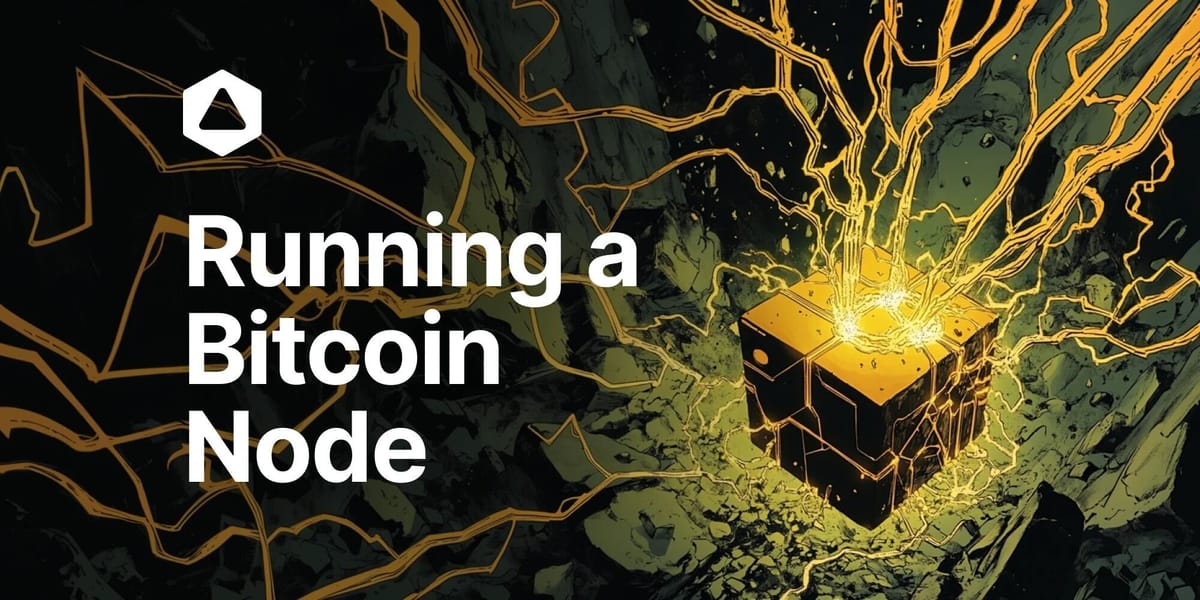
If you think you are fully participating in the Bitcoin ecosystem while you trade or stack them as if there is no tomorrow, well, I am sorry to break it to you, but you are not doing enough. With all due respect, we can do more with Bitcoin than just transact, store value, or experiment.
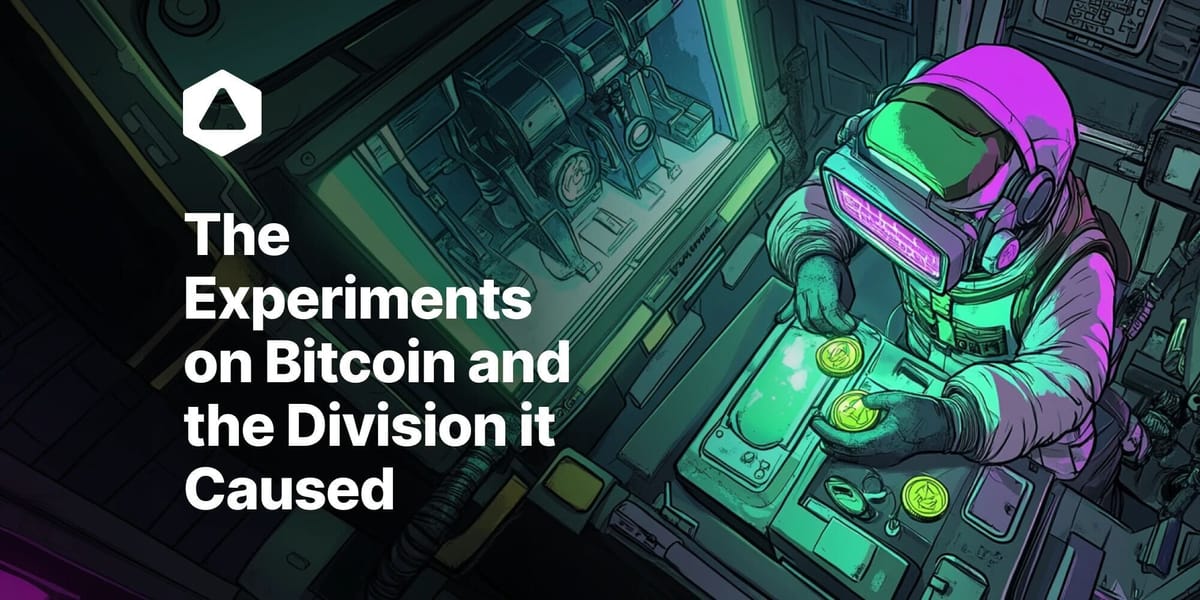
We can also own and validate transactions by running a node. This is another way to look at Bitcoin's decentralization, so to speak.
Join us in this article as we take you through the concept of Bitcoin nodes, help you set up and run one, and hope to show you the benefits of operating a Bitcoin node. Let's get started!
What is a Bitcoin Node?
To start off, if we talk about a Bitcoin node, we are talking about a computer that runs the Bitcoin software in order to validate, relay, and store its transaction data. These computers or nodes are distributed throughout the world and connect using the Bitcoin peer-to-peer protocol. In the image below we see that the nodes are very concentrated in the western hemisphere.
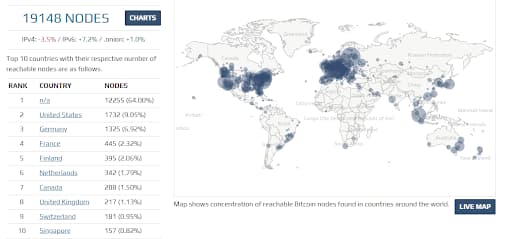
How do Bitcoin Nodes Work?
A Bitcoin node has two main jobs: to keep a copy of the blockchain and to validate and relay new transactions and blocks.
1. Keep a Copy of the Blockchain
A Bitcoin node runs on software that contains a full copy of its blockchain. Therefore, when a node downloads the software, it connects them to the whole current and historical Bitcoin network.
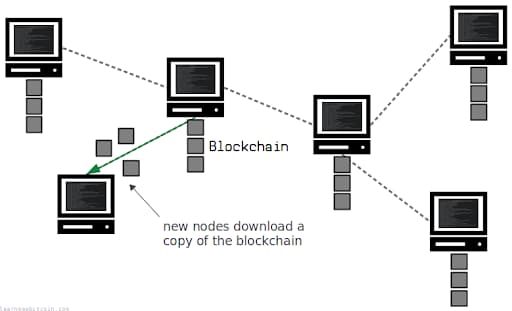
2. Validate and Relay New Transactions and Blocks
As we know, Bitcoin transactions are batched and stored into groups called blocks. Before any block is added to the blockchain, nodes must verify that its transactions are valid. This is done by checking against the software's set of rules, such as whether the same BTC was spent twice (commonly referred to as double-spending) or whether a sender has the BTC they are trying to send.
This process calls for at least 51% of every online node in the network to agree upon the validity of the transaction, which is what we call consensus. Once validated, the transaction is then added to a memory pool awaiting miners to select it.
Miners perform their computational tasks to generate a new block for the transaction and add it to the blockchain. They then broadcast the new block to the nodes, who verify it is all correct and add it to the previous chain of blocks to achieve the transaction’s final settlement.
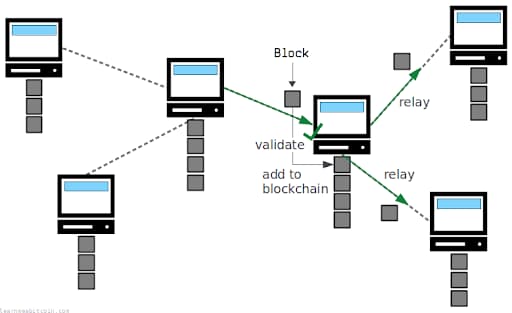
Types of Bitcoin Nodes
There are different types of Bitcoin nodes, each with unique characteristics and capabilities. Although running a Bitcoin node is not directly profitable in the sense that it does not earn Bitcoin mining rewards, we take a closer look at the different nodes that can be run...
Full Node
A full node is a program that fully validates transactions and blocks. Almost all full nodes also support the network by accepting transactions and blocks from other full nodes, validating those transactions and blocks, and then relaying them to further full nodes.
To break this down into simple terms, a full node stores a complete copy of the blockchain. This means it holds every Bitcoin block and transaction since its inception in 2009, which allows it to check any transaction's validity against this history and the set of rules encoded in the Bitcoin software.
Full nodes are further classified into two categories:
1. Archival Node
These store the entire copy of the blockchain and can replicate it to any new nodes joining the network.
2. Pruned Node
These are full nodes configured to run in a pruned mode to reduce storage requirements. After downloading the complete copy of the blockchain, pruned nodes delete older blocks further down the chain to create disk space for new blocks.
As a result, they cannot replicate a complete copy of the blockchain to new nodes joining the network.
Light Node
Also known as 'lightweight nodes', these are a type of node that only download and maintain the block headers (the summaries of the blockchain data). This makes them suitable for devices with limited storage and processing power, such as mobile phones or low-powered computers. Also, they are more cost-effective to own compared to full nodes.
To verify transactions, light nodes use the Simplified Payment Verification (SPV) method which relies on a copy of the block headers of the longest chain (the chain of blocks that took the most effort to build) to link the transaction to its block.
As we know, Bitcoin uses the proof-of-work consensus mechanism, which requires processing power to add a new block to the blockchain. Therefore, a blockchain with more blocks (the longest chain) will have taken more energy to build than a chain with fewer blocks, and that is why light nodes will always adopt this chain over a "shorter" one - the 'Longest Chain Rule'.
A light node can request proof from a full node to confirm whether the transaction is in that specific block before updating it.
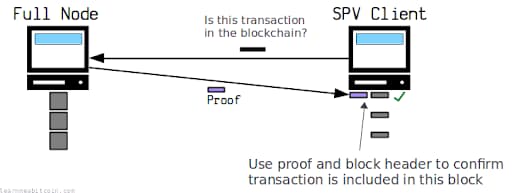
Mining Nodes
Maybe you've heard the statements: "miners aren’t ‘nodes’" or "miners are nodes but not all nodes are miners".
As we saw earlier, Bitcoin nodes and miners constantly communicate with each other to verify transactions and blocks. Therefore, if we consider the general term of a node as being 'any device that communicates with other devices in a network', then miners qualify as nodes. This is perhaps the reason the Bitcoin Whitepaper sometimes refers to nodes as miners and considers miners to be running as full nodes.
Therefore, the easiest way to understand this is by agreeing that miners are a special type of node with the ability to create blocks and earn Bitcoin as a reward, while running a node does not generate direct financial returns.
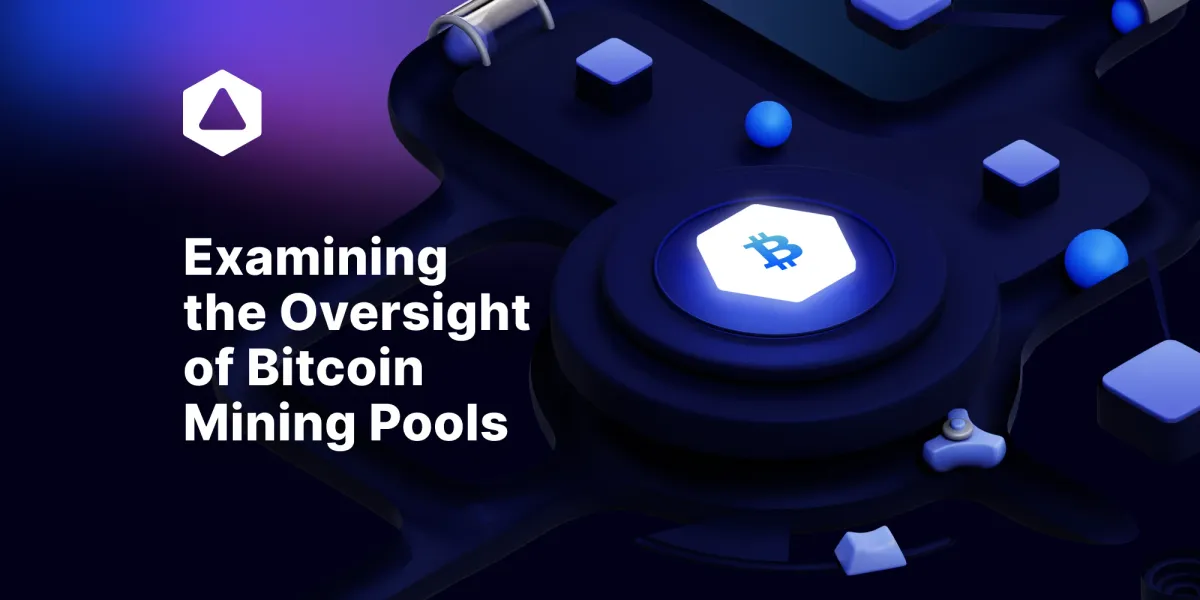
So with this in mind, let us take a look at how you can run a Bitcoin node.
Running a Bitcoin Node
To understand how we can run a node, we first need to start with the essentials - what are the requirements for us to even begin?
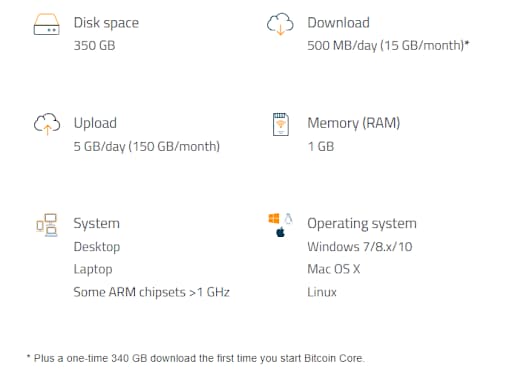
To run a node we need the correct hardware and software:
- Hardware - the system, disk space, memory (RAM), and the internet connection. The internet should have an upload speed of at least 400 kilobits (50 kilobytes) per second. This connection should also be unmetered or one you can regularly monitor to ensure it doesn’t exceed its upload limits.
- Software - Bitcoin Core and the operating system (available at bitcoin.org) can be run just using an old laptop.
Several other clients also provide the software to download the complete Bitcoin blockchain history, for example btcd, bcoin, and Bitcoin Knots, but Bitcoin Core accounts for the highest number of full nodes
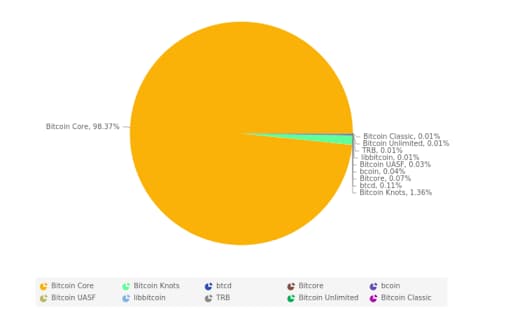
Another requirement is that your full node should be left running for at least 6 hours a day, but more hours would be better, and best if run continuously. You should also consider the cost, which varies based on the hardware used and operational expenses like electricity and internet.
Once you have all those requirements, you will be all set to run your own Bitcoin node.
How to Set Up and Run a Full Node
Step 1: Download and Install Bitcoin Core
Visit bitcoincore.org/en/download/ and select a version of Bitcoin Core. You can choose the latest version or an older one if you prefer settings from a previous update. As we saw earlier, you can install the Bitcoin Core on Linux, MacOS, and Windows by following the given instructions.
Step 2: Configure Bitcoin Core
Once you’ve installed Bitcoin Core, you can mold it to your needs. This includes making key configurations like where to store the blockchain data and how you want it to connect to the Bitcoin network. You can allow incoming connections or allow connections only to specific nodes, depending on your privacy and security preferences.
To continue enjoying these configurations, it is important to regularly update Bitcoin Core to receive the latest features.
Step 3: Sync With the Bitcoin Network
Once installed, open Bitcoin Core to begin syncing with the blockchain. Syncing involves downloading and verifying all the transactions on the Bitcoin blockchain since its inception through the IBD (Initial Block Download).
If you want to run a pruned full node due to storage limitations, go to the Bitcoin Core client, click 'Settings', and select 'Options'. Under the 'Main' tab, you can set the desired block storage size. The sync process can take from a few hours to several days depending on your hardware and internet speed.
Step 4: Running Your Node
Once your node is fully synced, you’re ready to run it. Congratulations! You just became a bigger participant in the Bitcoin network. 👏
Benefits of Running a Bitcoin Node
Running a Bitcoin node is a fundamental way to participate in the Bitcoin network that offers multiple advantages. By operating a node, you can independently verify ALL transactions and blocks without relying on any third parties - the old-school "don't trust, verify."
Does Running Your Own Node Increase Privacy?
Yes, one of the primary reasons hardcore Bitcoin enthusiasts run their own nodes is for increased privacy. This setup helps in keeping their transactions and data away from prying eyes, ensuring that only they have control over their financial information.
How Does Running Your Own Node Affect Your Conviction in Bitcoin?
Operating your own node can significantly boost your conviction in Bitcoin. This is particularly true during bear markets, a time viewed by enthusiasts as optimal for building and strengthening the network.
Can Running a Node Make the Network More Resilient?
Absolutely. The decentralized nature of Bitcoin allows it to operate continuously around the globe without interruption. For instance, if the internet goes down in one country, nodes in other countries would still function, maintaining the network’s integrity.
There are even solutions like satellite communications where companies ensure that Bitcoin remains operational worldwide, even in remote or restricted areas.
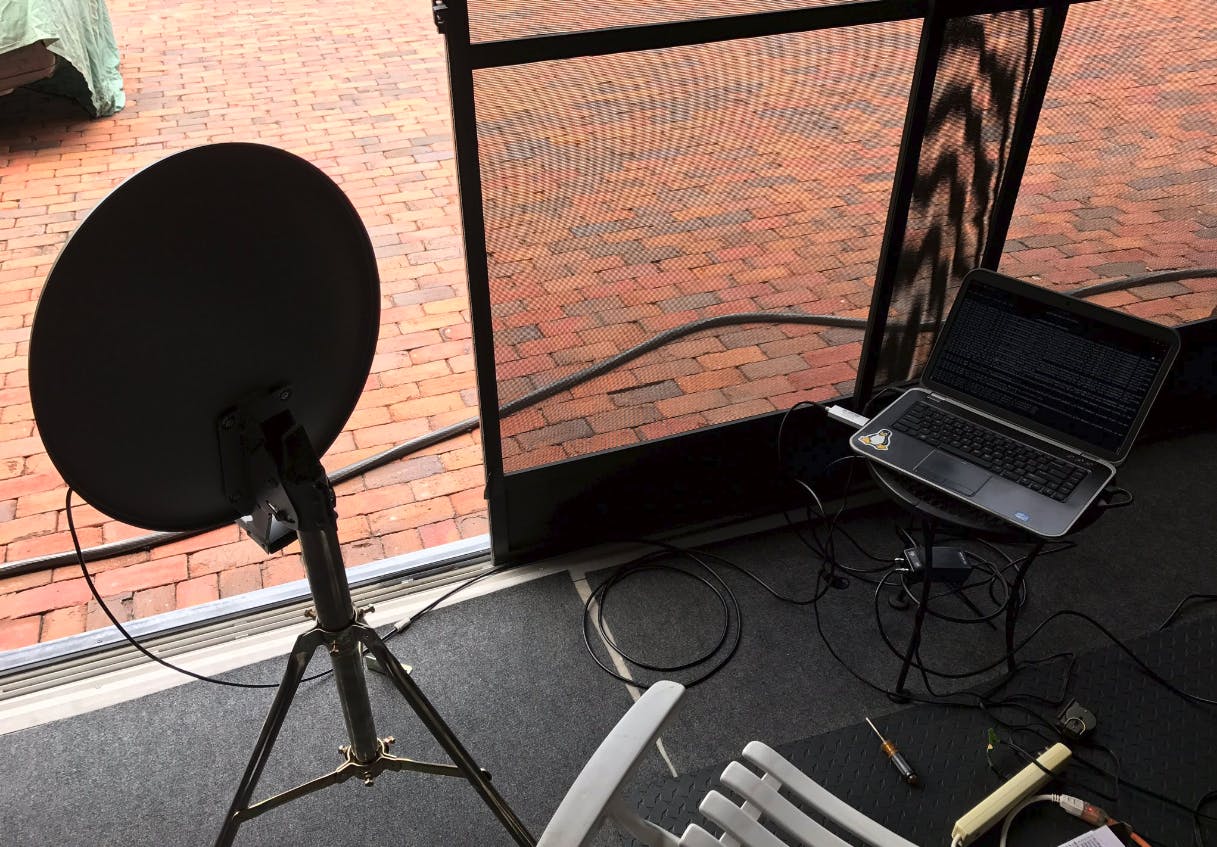
How Does Running a Node Fit Into Everyday Life?
A Bitcoin node can be as unobtrusive as a home router. It can be connected directly to your router and placed in the same area, operating quietly without disrupting daily life.
This makes it an excellent way for anyone interested in supporting the Bitcoin network without the hassle of managing noisy, high-energy-consuming equipment like miners.
Conclusion
While holding your keys is a way to interact with Bitcoin in a sovereign way, hopefully you can now see that taking the extra steps to fully validate your interactions with your full node has additional benefits.
And by embracing this principle of self-sovereignty and decentralization, you play a vital role in bringing user-controlled finance closer to reality than ever before. So what are you waiting for, let's decentralize!
Mainnet and TGE on 19th November.

Connect with Bitfinity Network
Bitfinity Wallet | Bitfinity Network | Twitter | Telegram | Discord | Github

*Important Disclaimer: The information provided on this website is for general informational purposes only and should not be considered financial or investment advice. While we strive for accuracy, Bitfinity makes no representations or warranties regarding the completeness, accuracy, or reliability of the content and is not responsible for any errors or omissions, or for any outcomes resulting from the use of this information. The content may include opinions and forward-looking statements that involve risks and uncertainties, and any reliance on this information is at your own risk.
External links are provided for convenience, and we recommend verifying information before taking any action. Bitfinity is not liable for any direct or indirect losses or damages arising from the use of this information.








Comments ()